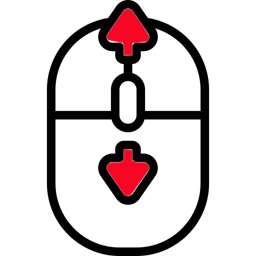
Reading & Doing
Old Tiny Games
Solving this kind of problem requires some imagination.
Now we have three ways to make a word A into another word B, by
Since adding a character to A also means deleting character from B, so the first two ways just are the two sides of the same coin.
Actually, We don't care whether we change A into B or B into A, we just want to know the minimum number of editing steps required.
Let's consider the following question:
I want to know the mininum steps of changing A[0, i) into B[0, j):
steps{A[0, i) -> B[0, j)}
Why do I use i and j?
Because i never know exactly what the words A or B are!And A[0, i) does not simply means A, it means all of the substrings of A, all of the intermediate states of changing A into B or B into A!.
Now back to our question: A[0, i) -> B[0, j), i never know how to calcate this expression!
But i can assume i can get the mininum number of steps of A[0, i) -> B[0, j - 1), to get B[0, j) i can simply adding one char. So i can get this expression:
steps{A[0, i) -> B[0, j - 1)} + 1 == steps{A[0, i) -> B[0, j)}
Actually, i don't know what the answer is for steps{A[0, i) -> B[0, j - 1)}. To simplify the question, which i mean by (j - 1), i have to assume that I already have the answer.
Since adding a char or deleting a char are just the two sides of one coin, i can achieve this expression:
steps{B[0, j) -> A[0, i - 1)} + 1 == steps{B[0, j) -> A[0, i)}
let's simplify these expressions, i just think of the mininum number of steps required to change A[0, i) into B[0, j) or B[0, j) into A[0, i) as F(i, j), we only care about the numbers:
F(i, j) == steps{B[0, j) -> A[0, i)} == steps{A[0, i) -> B[0, j)}
So the above expressions can both be simplified into:
F(i, j - 1) + 1 == F(i, j);
F(i - 1, j) + 1 == F(i, j);
Now, let's consider the following expression:
F(i - 1, j - 1) + 1 == F(i, j);
I can change this expression back into the original verison:
steps{A[0, i - 1) -> B[0, j - 1)} + 1 == steps{A[0, i) -> B[0, j)}
I think this expression is correct, too. Do you know why?
let 's recall our first expression:
steps{A[0, i) -> B[0, j)}
This expression means the mininum number of steps of changing A[0, i) into B[0, j). In this expression, we got two variables, i and j. Why don't we make i to be a constant number such as 0 to see what we can get(controlled variable method)?
let i = 0;
A[0, i) == "";
steps{ "" -> B[0, j) } == j // adding all of the chars of B[0, j) into ""!
Things get interesting, what if we make i equal to 1?
let i = 1;
A[0, 1).length == 1; // We only know the length!
steps{ A[0, 1) -> B[0, j) } == Math.abs(j - 1) // what's the hell ?
// delete a char of A[0, 1)
steps{ A[0, 1) -> B[0, 0) } == steps{ A[0, 1) -> "" } == 1;
// We just want the mininum number, remember?
steps{ A[0, 1) -> B[0, 1) } == steps{ "x" -> "x" } == 0;
steps{ A[0, 1) -> B[0, 2) } == steps{ "x" -> "xa" } == 1;
steps{ A[0, 1) -> B[0, 3) } == steps{ "x" -> "xab" } == 2;
...
steps{ A[0, 1) -> B[0, B.length) } == B.length - 1;
Now, let's check the solution:
function minDistance(word1: string, word2: string): number {
let l1 = word1.length + 1;
let l2 = word2.length + 1;
// i use dp[r][c] to represent the F(i, j)
// rows
let dp = Array(l1)
.fill(0)
// cols
.map((_) => Array(l2).fill(0));
// calcate some initial values.
for (let r = 1; r < l1; r++) {
dp[r][0] = r;
}
for (let c = 1; c < l2; c++) {
dp[0][c] = c;
}
for (let r = 1; r < l1; r++) {
for (let c = 1; c < l2; c++) {
if (word1[r - 1] === word2[c - 1]) {
dp[r][c] = dp[r - 1][c - 1];
} else {
dp[r][c] = Math.min(dp[r - 1][c], dp[r][c - 1], dp[r - 1][c - 1]) + 1;
}
}
}
return dp[word1.length][word2.length];
}